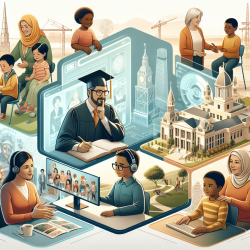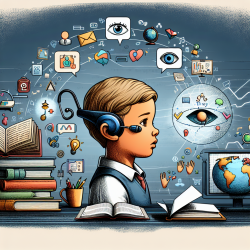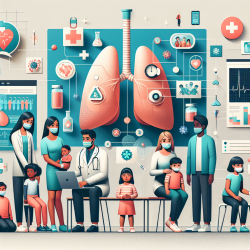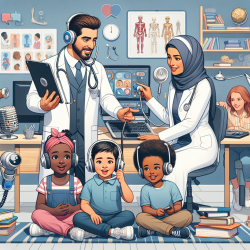Introduction
Public universities in the United States play a pivotal role in human capital development, significantly impacting regional economies. The study titled "Public Universities and Human Capital Development in the United States" by O’Neill and Bagchi-Sen (2022) provides a comprehensive analysis of how these institutions attract, train, and retain students, contributing to regional economic growth. This blog explores the study's findings and offers insights for practitioners, particularly those involved in speech-language pathology and online therapy services, to enhance their skills and improve outcomes for children.
Understanding the Role of Public Universities
The study emphasizes the importance of a holistic approach to understanding the impact of public universities on human capital development. It highlights the need to consider the entire student journey, from their hometown to campus and beyond, up to a decade after graduation. This comprehensive view allows for a more nuanced understanding of how different types of public higher education institutions contribute to human capital development.
Key Findings and Implications
- Attraction and Retention: The study reveals that institution type significantly influences the attraction and retention of students. Research universities tend to attract students from a broader geographic area, while community colleges and smaller institutions often serve local populations. This insight is crucial for practitioners aiming to improve regional retention rates and address local labor market needs.
- Program Offerings and Economic Impact: The diversity of programs offered by public universities plays a critical role in shaping regional economies. Institutions offering specialized curricula can attract non-local students and contribute to local economic development. Practitioners can leverage this knowledge to advocate for programs that align with regional economic needs and enhance human capital.
- Wages and Employment Outcomes: The study identifies a strong association between program type, degree level, and graduate wages. Higher degrees and programs in high-demand fields tend to result in better economic outcomes for graduates. This finding underscores the importance of aligning educational offerings with labor market demands to improve employment outcomes for students.
Practical Applications for Practitioners
For practitioners in speech-language pathology and online therapy services, the study's findings offer valuable insights for enhancing service delivery and improving child outcomes:
- Data-Driven Program Development: Use data on regional labor market needs and educational outcomes to develop targeted programs that address specific skills gaps. This approach can improve employment outcomes for graduates and contribute to regional economic growth.
- Collaboration with Educational Institutions: Partner with local universities and colleges to align curricula with industry needs. Such collaborations can enhance the relevance of educational programs and improve the employability of graduates.
- Focus on Retention Strategies: Implement strategies to retain graduates in the region, such as offering incentives for local employment or creating pathways for continued professional development. Retaining skilled graduates can have a positive impact on regional economies and improve service delivery in fields like speech-language pathology.
Conclusion
The study by O’Neill and Bagchi-Sen provides a comprehensive framework for understanding the role of public universities in human capital development. By leveraging these insights, practitioners can enhance their skills, improve outcomes for children, and contribute to regional economic growth. For those interested in delving deeper into the research, the original paper can be accessed here.










